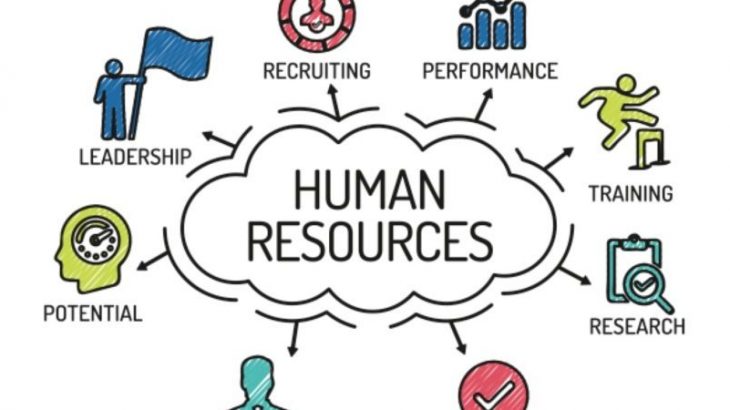The Age of Acceleration
We live in times when speed is of the essence, and the ability to be ultra fast (in any sphere of life and business as well as work and society) is the defining characteristic of success.
Indeed, the times have speeded up so much that responses to events are no longer timed on the basis of days and weeks, but, on the basis of hours and minutes and even seconds.
For instance, the ever present and ever powerful chatter of Twitter Feeds and Facebook Posts means that professionals and laypersons alike are expected to respond to evolving and changing events and trends almost instantaneously without pausing to check the consequences or the repercussions from both the events as they happen in real time and their responses which are equally fast.
Impact of Quickness on the HR Function
This means that no business function or organization is exempt from the constant pinging and constant chatter that distracts as well as necessitates responses.

Thus, the HRM or the Human Resource Management Function is equally caught up in the acceleration of business and life. This means that HR professionals are under stress to deliver results the outcomes of which are instantaneous as opposed to being spread out over months and years.
Take, for instance, hiring, and recruitment. While the advent of the IT or the Information Technology Sector and the Financial Services sector compressed the hiring cycles to quarters and months, the present age of acceleration has further compressed it to days and weeks.
Indeed, even during the IT boom, HR managers were expected to fill positions within a quarter or a month and even this was considered too hectic by many old timers among the HR professionals hitherto used to hiring cycles that were more elaborate.
This resulted in the dilution of the quality of the talent that was being hired by many IT and Services sector firms as there was simply not enough time to perform due diligence on all aspects of the candidates being hired including and not limited to their technical and communication abilities but also their backgrounds and other vital checks.
Acceleration Then and Now
While many organizations learned to live with such shortcomings during the 1990s and the 2000s, the situation now has changed both qualitatively and quantitatively wherein talent is expected to be hired and on-boarded in weeks.
Indeed, the other aspect here is that due to the constrained economic situation, many organizations are paring down their bench strengths so that they do not incur overheads and at the same time, make optimal use of the existing resources.
This has led to a double whammy where positions and vacancies arise quickly, and the HR professionals are expected to fill them even more quickly while being unable to tap the bench leading to a situation where everyone is under pressure to act and deliver results.
Further, with the rise of temping and short duration positions, HR professionals are expected to give their assent to recruits and talent as soon as possible since the talent being hired is either on a temporary basis or on contractual and vendor based positions that do not require extensive vetting.
When Everything Happens Now and As Of Yesterday
Having said that, this is also a situation where the HR managers cannot simply take anyone who comes along as that might jeopardize the interests of the organizations.
Thus, the contemporary HR professional is caught in a bind wherein the pressure to fill positions quickly is doubled by the need to do a thorough if not basic vetting.
In addition, the performance appraisal and evaluation cycles have also shortened leading to more stress on the HR professionals as they have to cope with the increased workload and the stress and strain.
Indeed, when everything happens “Now” and when the HR professionals are expected to deliver results “As of Yesterday”, no wonder the burnout rate among this class of professionals’ ranks with that of the Investment Bankers and Doctors.
Moreover, with feedback related to job performance and other attributes being sought as soon as the task or the quarterly review is completed, the entire organizational ecosystem has to be geared towards operating on a continuous and round the clock basis.
The Promise and the Perils of the Current Age for the HR Profession
Having said that, this does not mean that one should not take up HR as a profession anymore. On the contrary, HR professionals now have more autonomy and options before them when compares to the earlier decades.
For instance, the Age of Acceleration has meant that HR professionals now have more control over their functions and jobs as organizational resources are divided in such a way that line managers and rank and file employees focus on their core competencies leading to the HR function being left to the pure play HR professionals instead of excessive interference.
Moreover, the HR professionals have more options related to hiring and firing as the former are aided by a Phalanx of tools that give them more choices and channels for hiring and the latter are made easier by the liberalization of labor laws and regulations that give organizations greater power over downsizing and layoffs.
On the other hand, this has also led to some situations wherein excessive too quick firing has been challenged in the courts and at the same time, hiring with more autonomy has not necessarily led to better quality of talent.
To conclude, there are opportunities and challenges for the contemporary HR professionals, and hence, the success or failure of these professionals depends to a large degree on how they have mastered the art of quickness and have developed the ability to maintain a Zen like calmness in the face of constant distraction.





